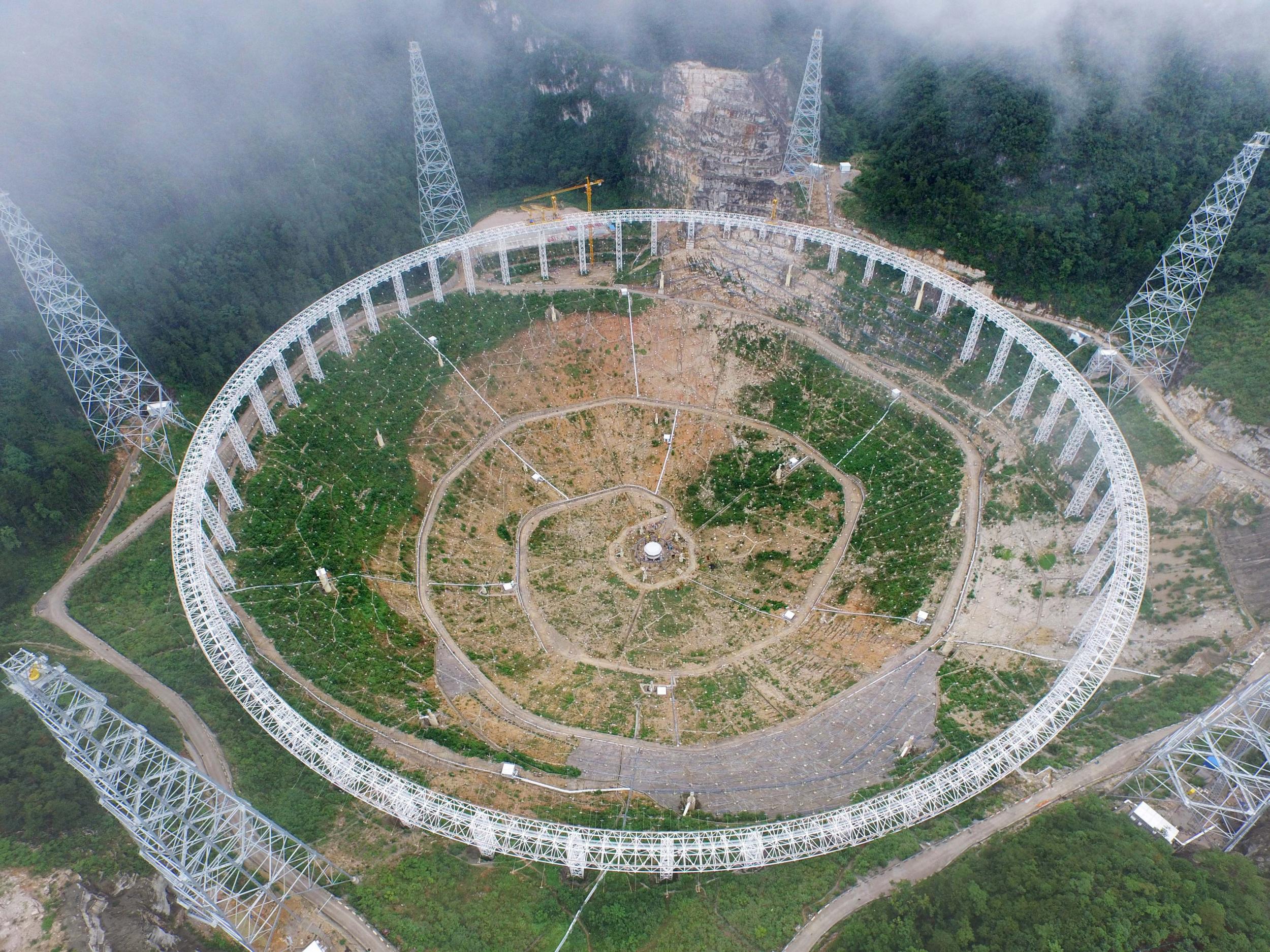China enters the search for alien life with the construction of the world's biggest radio telescope
The FAST radio telescope will be the biggest and most sensitive ever constructed

Your support helps us to tell the story
From reproductive rights to climate change to Big Tech, The Independent is on the ground when the story is developing. Whether it's investigating the financials of Elon Musk's pro-Trump PAC or producing our latest documentary, 'The A Word', which shines a light on the American women fighting for reproductive rights, we know how important it is to parse out the facts from the messaging.
At such a critical moment in US history, we need reporters on the ground. Your donation allows us to keep sending journalists to speak to both sides of the story.
The Independent is trusted by Americans across the entire political spectrum. And unlike many other quality news outlets, we choose not to lock Americans out of our reporting and analysis with paywalls. We believe quality journalism should be available to everyone, paid for by those who can afford it.
Your support makes all the difference.Chinese scientists are constructing the world's biggest radio telescope, which will be more effective than any other at picking up weak messages from outer space that could be linked to intelligent life.
Assembly of the Five-hundred-metre Aperture Spherical Telescope, or FAST, began in July and is expected to be completed in 2016.
Once finished, the reflector dish of the telescope will be 500 metres in diameter, replacing Puerto Rico's Arecibo Observatory, only 300 metres in diameter, as the world's largest.
The wider the dish, the more effective the telescope becomes at picking up weak messages from outer space.
Nan Rendong, the chief scientist of the FAST project, told the Xinhua news agency: "A radio telescope is like a sensitive ear, listening to tell meaningful radio messages from white noise in the universe."
"It is like identifying the sound of cicadas in a thunderstorm."
Rather than sitting above ground, the telescope's dish is sunken into a natural bowl-shaped valley in China's Guizhou province.
The geography of the surrounding hills and the remoteness of the site mean that there will be less interference from Earth-based radio signals.
The dish will be suspended slightly above ground level by a series of strong pillars and cables, allowing operators to move it and listen in to noises coming from different parts of space.
Although the dish is huge, the scientists may have a long wait if they want to pick up on alien radio signals.
The SETI Institute, which leads humanity's search for extraterrestrial life, has never picked up any message that conclusively comes from an alien civilisation, despite having a number of Earth and space-based telescopes at its disposal.
However, even if aliens don't make contact, radio telescopes smaller than FAST have been used in the discoveries of new planets, comets and pulsars.
The construction of the telescope also represents a huge advance for China's native space programme.
Despite the country's peaceful explorations into space only beginning in the 1990s, they have already sent a human into orbit, and are currently planning the launch of a space station and a manned mission to the Moon, both scheduled to take place at some point in the 2020s.
The development of the telescope will allow Chinese scientists to have their own first-hand data and equipment, rather than having to rely on information supplied by foreign space telescopes.
Wu Xiangping, the director-general of the Chinese Astronomical Society, told Xinhua: "Having a more sensitive telescope, we can recieve weaker and more distant radio messages."
"It will help us to search for intelligent life outside the galaxy and explore the origins of the universe."
Join our commenting forum
Join thought-provoking conversations, follow other Independent readers and see their replies
Comments